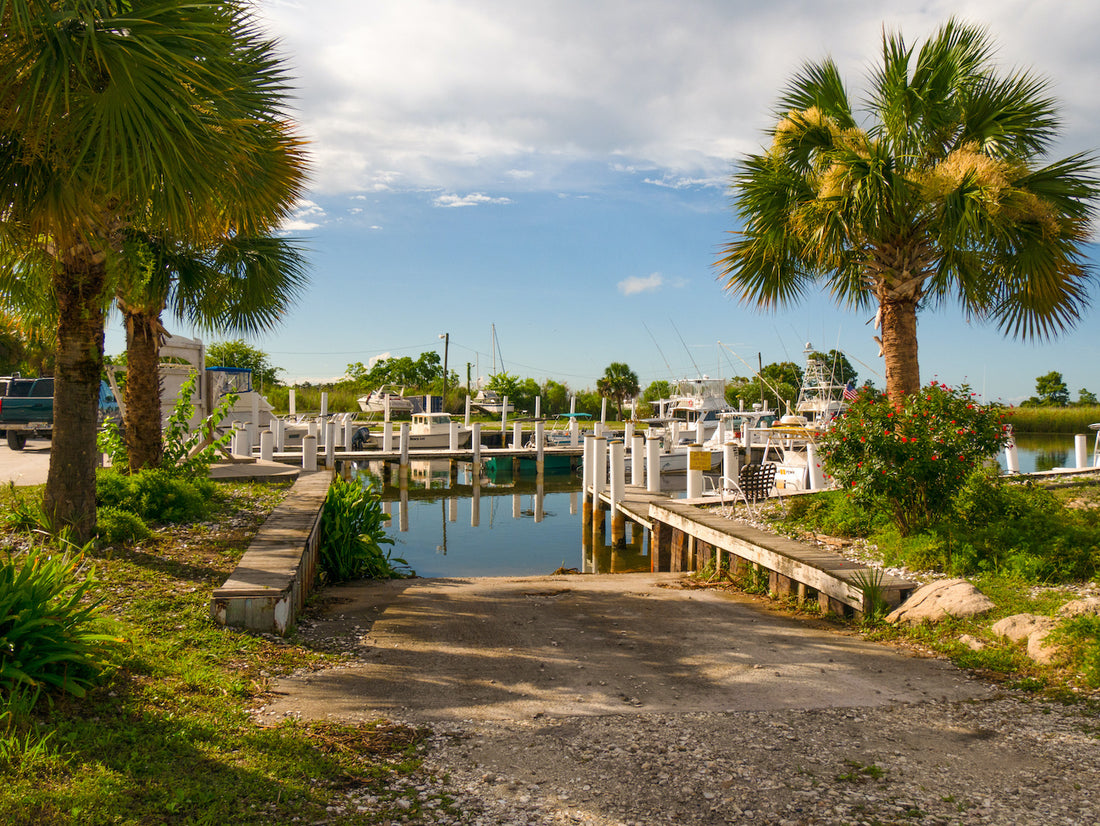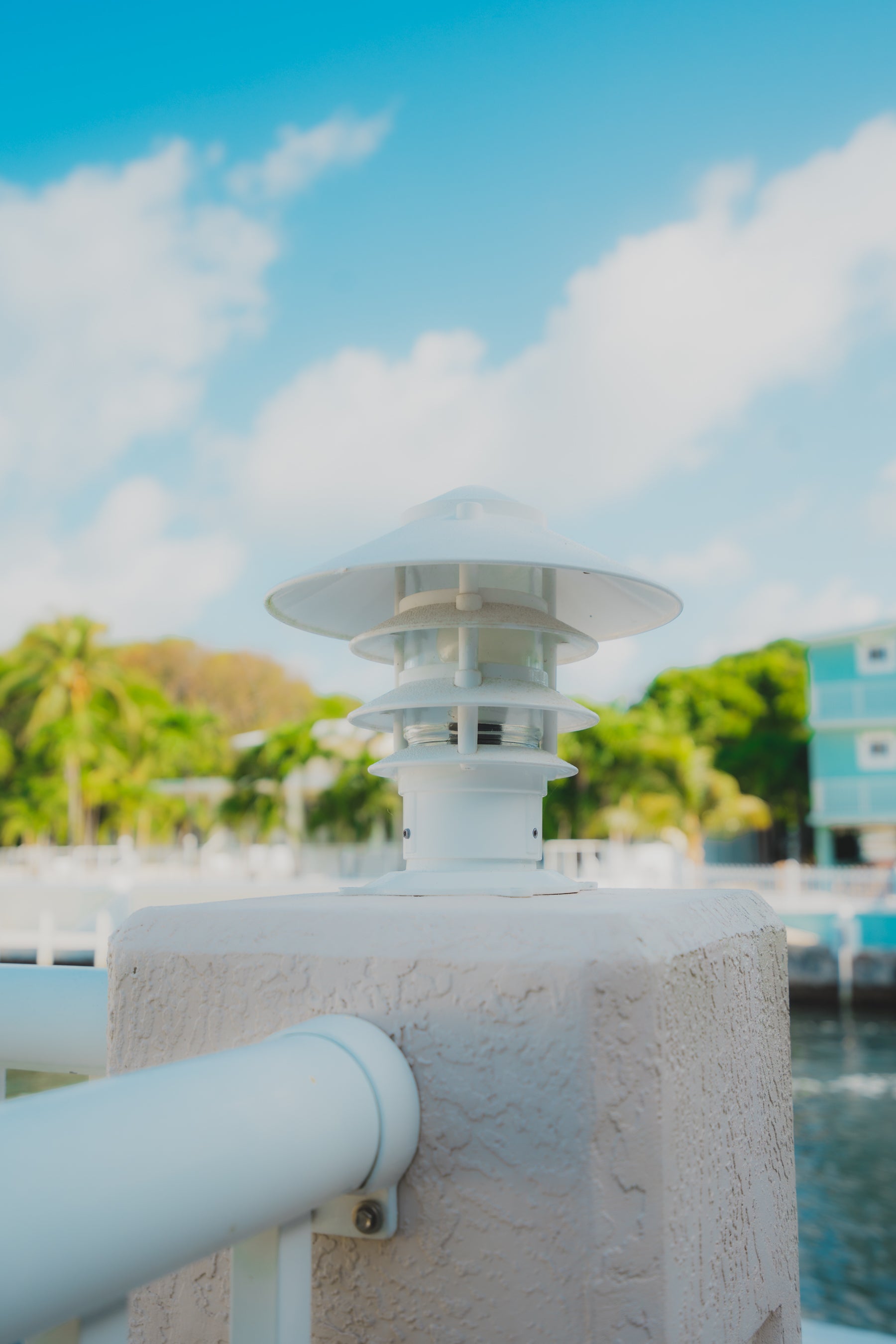
Slippery Boat Ramp Solutions
Share
Boat ramps are a necessary part of boating. They're the entryway to all sorts of fun, but they can also be downright dangerous if you don't know what you're doing. One slip or trip on a slippery ramp could send you and your boat into the water and injure someone nearby who's trying to load their vessel.
If this sounds like your worst nightmare—and we can't blame you—then read on for some tips on how to make sure everything goes smoothly at the dock.
Why Are Boat Ramps So Slippery?
Boat ramps can be slippery for several reasons. First, there's the water itself. Water is very smooth and wet, making it easy for things like boats to slip off the dock if they're not adequately secured. Boat docks also tend to get slippery when wet, making it difficult for people to move around them safely.
Steep ramps are another common cause of slip-and-fall accidents. If a ramp is too steep or has an uneven surface, it will be difficult for people to walk up or down without slipping and falling.
The material of the boat ramp will affect slipperiness as well. If the ramp material is wood or concrete, then mud or sand might get stuck to your trailer wheels as you drive up them. This can reduce friction between the ramp and your tires—when there's too little friction, it can make things dangerously slippery!
Another possibility is too much algae growing at the location of your boat launch. Algae naturally produce a slippery substance called mucilage that helps protect the algae from predators. When this mucilage gets onto something like a ramp, it can make for some very slippery conditions.
How Do You Make a Boat Ramp Not Slippery?
Slippery boat ramps can be problematic, especially during low and high tides when less water is available to absorb the energy of the vehicle's weight on the ramp. To fix this problem, make sure the ramp is clean and dry.
The best way to ensure that your boat ramp is safe is to check it before you begin using it. You can do this by walking across the surface on foot to see if there are any areas where you could trip.
Make sure to remove any debris, oil, or grease from the surface of your boat ramp. Check for any other slippery substances that could make the ramp unsafe.
In cold conditions, you may even need to remove snow or ice from your boat ramp before using it so that you don't slip when getting out of or into your vessel. Finally, make sure that drains are not blocked. Water needs to be able to properly drain away from where people walk when entering/exiting their boats onto land surfaces – such as docks/piers – or where vehicles drive up near them for disembarkment.
Apart from taking the above measures to keep your boat ramp safe, you can take these additional steps to make the ramp safer for use:
Traction Mats
If you have trouble pulling your boat out of the water because the ramp is covered in slippery algae, place a traction mat under your tires to increase grip. Traction mats are available for this purpose in several sizes and shapes (trapezoidal, rectangular, and round), so it's easy to find one that fits your needs.
They're made from hard rubber material with traction grooves cut into them, so they can grip even when wet surfaces might make other materials slip around.
Traction mats can also come in handy if you need extra traction while moving heavy equipment around on land. They're also beneficial for moving large items in wet conditions, such as when it's raining or snowing outside.
Bucket of Coarse Sand
If the ramp leading to your boat has algae, try dumping a bucket of coarse sand under your tires—the extra traction will help you pull out. Another solution can be to put sandbags into your vehicle's bed or on top of its trailer. The added weight will provide more traction in slippery conditions by giving it more grip.
This method is inexpensive and works well on 2WD vehicles because they do not have much traction already and may need something extra to help them get traction on slippery surfaces.
To make this method even more effective during winter, add salt or ammonia to the coarse sand before using it. This will help melt away any ice on the ramp so that your tires can grip the surface more easily.
Deflating Rear Tires
If you're towing a vehicle and have a portable compressor, it could be helpful to deflate your tow vehicle's tires temporarily—around 15 psi is sufficient—and then re-inflate them once your boat is secured on the trailer and towed out.
This solution works best for vehicles with rear-wheel drive systems. By deflating the rear tires on your vehicle, you will shift some weight over the front tires and give yourself more traction on your boat ramp. This will make it easier to maneuver your vehicle up the ramp without having to worry about the tires spinning out from under your vehicle.
If you're parking on low tide and want to use your vehicle's winch to pull yourself up onto dry land, then deflating one or both of your rear tires is another option for reducing slippage risk.
Adding Weight Over Drive Tires
You may consider adding weight over the drive tires if you have trouble getting up and down boat ramps. This trick sinks your drive tires into the water instead of skimming across it, giving you more traction on your ramp.
Still, it can also lead to premature wear on your vehicle’s differential since there's more stress placed on it. This is due to the additional friction created by increased pressure between the front and rear axles.
One way to add weight over your drive tires is to allow crew members to sit directly over them in your truck bed – using an abundance of caution, of course! This can reduce the amount of slippage on your vehicle and make it easier for you to tow.
This can also be accomplished by using a bag of sand or other heavy material that easily fits into the bed of your pickup truck. Try putting one bag of sand on each side of each wheel and see if it improves performance. If that doesn’t help, try two bags on each side of each wheel. If you still don't see an improvement, keep adding additional bags until you reach a point where the vehicle can safely tow the trailer with no issues.
Regular Cleaning And Maintenance
Regularly cleaning your boat ramp ensures it stays slip-free. The last thing you want is algae to get caught between treads on your tires causing them to slip even more than they already do!
You can use a pressure washer or brush to scrub away algae, dirt build-up on the ramp's surface, and any oil slicks left behind by other boaters.
This will help prevent dirt from building up and reduce the number of algae that grows on your boat ramp. If you use a pressure washer or brush, be sure to rinse off any loose debris, so it doesn't get caught in your vehicle's tires as you drive away.
You should also consider checking your ramp for damaged bolts or screws—if any parts are worn down or broken, replace them with new ones immediately so that everything remains secure throughout the boating season. You should also ensure that your ramp is free of any obstructions, such as branches or rocks that could get caught in your tires, causing a flat or damage to the vehicle.
For many boaters, slippery boat ramps are a frustrating part of the summer. However, as long as you are careful and aware of your options, loading and unloading your boat safely at a public or private boat ramp doesn't have to be complicated.
For more dock and marine-related tips, consult the pros at any Haven Dock and Marine location.



